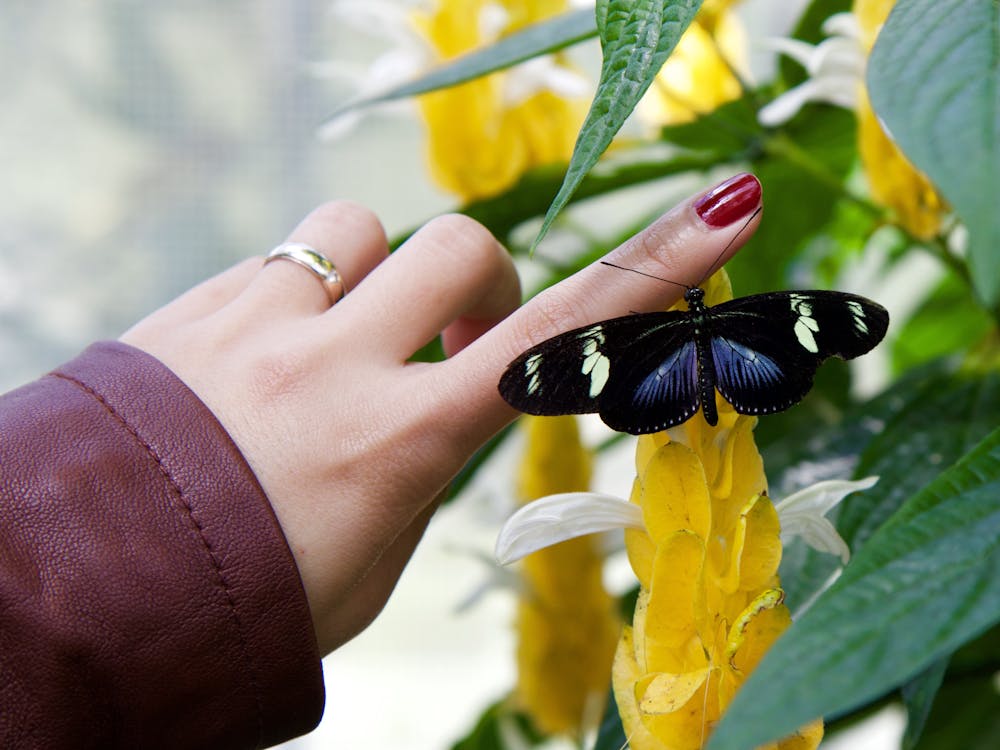
Creating a butterfly-friendly garden is like opening your home to a kaleidoscope of moving colors, each flutter and swoop a testament to the vibrancy of life. This guide is your easy-to-follow roadmap to make your garden a butterfly paradise, no matter your horticultural experience. Let’s embark on this journey together, understanding these magnificent creatures, selecting the best plants, and maintaining a space that not only you but also butterflies will love.
Butterfly Biology 101: An Introduction to Their World
Butterflies are much more than their elegant wings. Their life cycles are fascinating processes of transformation, encompassing stages from eggs to caterpillars, then pupae, and finally to the butterflies we adore. Each stage has unique needs, which, when met, help butterflies thrive in our gardens.
The Ideal Butterfly Habitat: What Attracts Them
Butterflies seek environments that cater to their survival. They love sunny spots sheltered from the wind, vibrant landscapes filled with colorful blooms, and essential water sources. Mimicking their natural habitat in your garden increases your chances of witnessing these beauties daily.
Seasonal Considerations: When They Visit
Our fluttering friends are particular about their visitation schedules. They adore spring and summer blooms but don’t shy away from late summer and autumn flowers. Knowing which plants flower during these crucial periods is key to keeping your garden butterfly-friendly year-round.
Choosing the Right Location: Sunlight and Shelter
A butterfly garden thrives in areas bathed in morning sunlight and protected from harsh winds. Identifying such spots in your garden can exponentially enhance its attractiveness to butterflies.
Selecting Butterfly-Friendly Plants: The Essentials
The secret to a bustling butterfly garden lies in the variety of plants you choose. Incorporating native plants, along with nectar-rich flowers and caterpillar host plants, sets the stage for a butterfly banquet.
Design Tips for a Visually Appealing Garden
Who said functionality couldn’t be beautiful? Grouping plants not only assists in attracting more butterflies but also adds an aesthetic appeal to your garden. Playing with color themes and incorporating elements like water features and stones can make your garden a feast for the eyes.
The Best Plants for Attracting Butterflies
Must-Have Nectar Source Flowers
Let’s talk about the butterfly magnets – milkweed, lavender, and zinnias, to name a few. These plants are like the gourmet restaurants for butterflies, offering the nectar they crave.
Caterpillar Host Plants
Your garden should also cater to the babies – caterpillars. Plants like parsley, dill, and fennel are excellent for feeding the future butterflies of your garden.
Year-Round Plant Strategy
Aiming for a mix of early season blooms to late- flowering plants ensures your garden remains a butterfly haven throughout the seasons, making every visit to the garden a potential butterfly encounter.
Maintaining Your Butterfly Garden: Best Practices
Watering and Fertilization
Keeping your plants healthy and blooming is crucial, and efficient watering techniques coupled with the use of organic fertilizers play a significant role. Remember, a healthy garden is an inviting garden.
Pruning and Deadheading
Getting hands-on with your garden by pruning and deadheading encourages bushier growth and continuous blooms, making your garden irresistible to butterflies.
Pest Management
A balanced ecosystem is essential. Identifying beneficial insects and employing natural pest control methods can keep your garden thriving while being a safe haven for butterflies.
Beyond the Garden: Supporting Butterfly Conservation
Creating Habitats Beyond Your Backyard
Our efforts to support butterflies need not stop at our gardens. Participating in community gardens and advocating for the creation of green spaces play a crucial role in their conservation.
Educational Opportunities
Butterfly gardening offers wonderful opportunities to learn and share knowledge. Whether it’s through workshops, family activities, or school projects, spreading the word raises awareness and encourages others to join the cause.
Citizen Science Projects
Getting involved in butterfly counts and research not only contributes valuable data to the scientific community but also deepens our connection with these incredible insects.
Conclusion
Embarking on a butterfly gardening journey is an adventure filled with learning, growth, and the sheer joy of hosting nature’s delicate dancers. As your garden blooms, so too will your understanding and appreciation for these essential pollinators. Remember, each plant you choose and every effort you make brings us one step closer to a world where butterflies flourish, darting from garden to garden in an endless celebration of life’s beauty.







